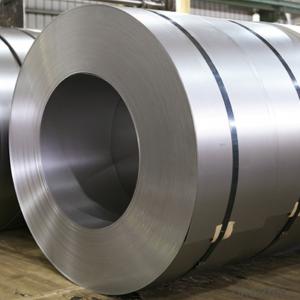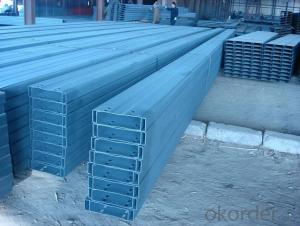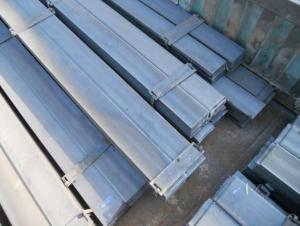Supply For Silicon Steel and Electric Steel
- Loading Port:
- Shanghai
- Payment Terms:
- TT OR LC
- Min Order Qty:
- 50 kg
- Supply Capability:
- 4000 kg/month
OKorder Service Pledge
OKorder Financial Service
You Might Also Like
1.Description:
Silicon steel containing silicon content is 0.5 to 4.5% of very low carbon ferrosilicon alloy, due to the different structure and use is divided into non oriented silicon steel and grain oriented silicon steel. Silicon steel is mainly used for motors, generators, compressors, motors and transformers core, is the electric, home appliances and other industries indispensable raw materials products.
Silicon steel sheets cold rolling, hot-rolled two, the use of more cold-rolled silicon steel sheet. Cold-rolled silicon steel sheet along the rolling direction with excellent magnetic properties, not only in the strong magnetic field has high saturation magnetic flux density and low loss, but also have good magnetic properties (initial permeability) in the weak magnetic field. Because of the cold rolling process, the impurity content of the steel sheet is decreased, and the coarse grain is caused, and the magnetic permeability is increased and the hysteresis loss decreases.
2.Product characteristic:
The main requirements for the silicon steel properties are:
1, low iron loss, this is the most important quality index of silicon steel sheet. All core loss grades according to the lower grades, the iron loss, the higher.
2, a strong magnetic field of magnetic induction (magnetic), which makes the motor and transformer core volume and weight, saving silicon steel, copper and insulating materials, etc..
3, the surface is smooth, flat and thickness uniformity, can improve the core fill factor.
4, good film, for manufacturing micro, small motor is more important.
5, the adhesion and welding of the surface insulation film is good, can prevent and improve the film.
3.Specifications :
Material: B50A470
0.5*1200*C, 0.5*1000*C
4.Reference picture:
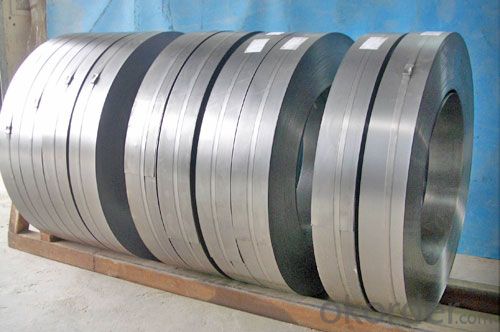
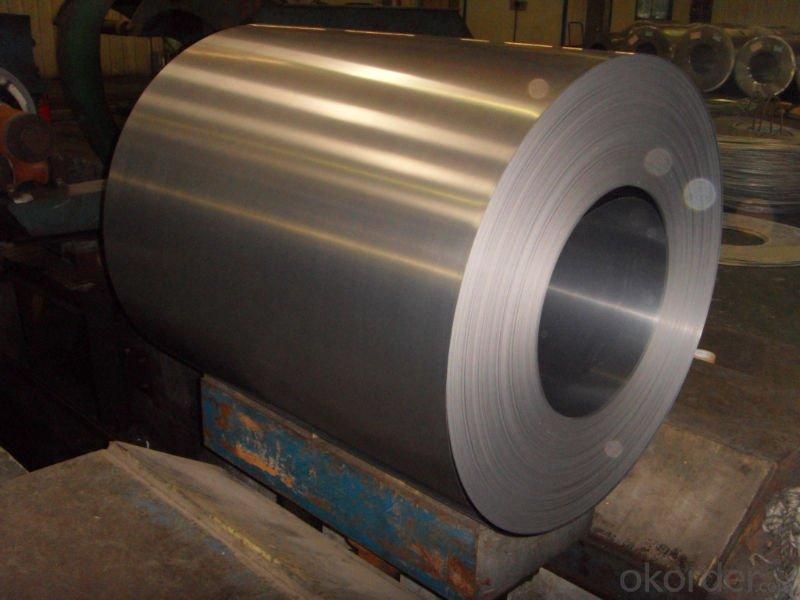
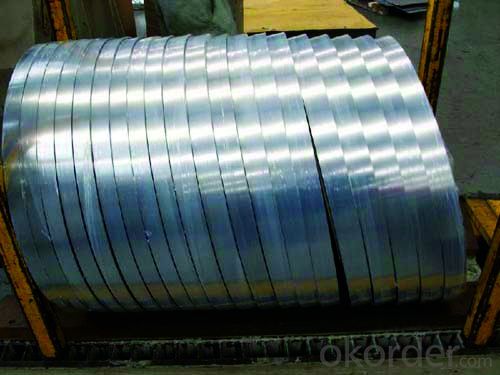
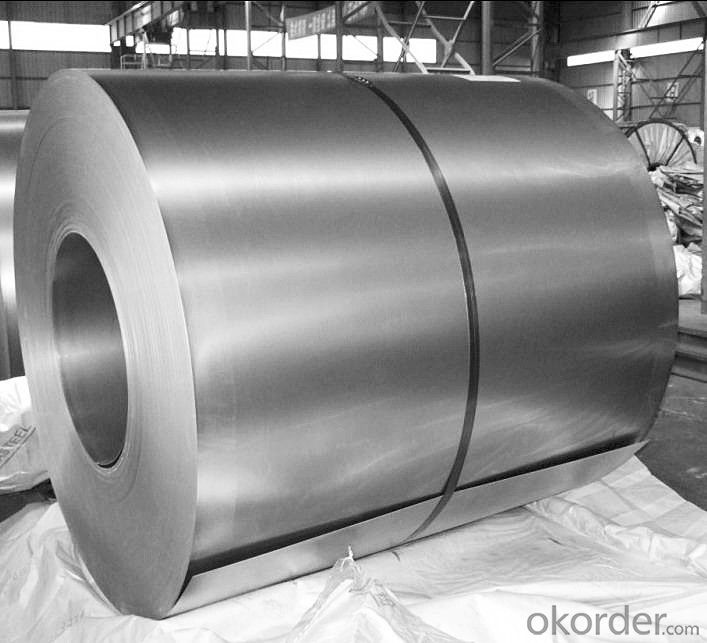
Material: B50A470
Origin / manufacturer :Shanghai Baoshan Iron & Steel Co.
Stock:Jiayin Stock
Specifications :0.5*1200*C, 0.5*1000*C
- Q:Can silicon steel be used in aerospace electrical systems?
- Yes, silicon steel can be used in aerospace electrical systems. It is commonly used in the construction of electrical transformers and motors due to its high magnetic permeability and low hysteresis loss. These properties make it suitable for applications requiring efficient electrical energy transfer, such as in aerospace electrical systems.
- Q:How does the frequency of the magnetic field affect losses in silicon steel?
- Losses in silicon steel are greatly influenced by the frequency of the magnetic field. Silicon steel is a material commonly used in transformers and electric motors due to its high magnetic permeability and low electrical conductivity. When operating at low frequencies, the primary cause of losses in silicon steel is hysteresis and eddy currents. Hysteresis loss occurs because it takes energy to magnetize and demagnetize the material during each cycle of the magnetic field. This loss increases as the magnetic field strength and the area of the hysteresis loop increase. However, at low frequencies, the hysteresis loss is relatively small compared to the eddy current loss. Eddy current loss occurs because the changing magnetic field induces circular currents within the silicon steel. These currents flow in closed loops within the material and result in resistive heating. The magnitude of eddy current losses increases in direct proportion to the frequency of the magnetic field. As the frequency increases, the skin effect becomes more noticeable, causing the eddy currents to concentrate near the surface of the material, resulting in higher losses. Therefore, at higher frequencies, the main factor contributing to the overall losses in silicon steel is the eddy current loss. This is why laminated cores are commonly used in high-frequency applications. Laminating the silicon steel into thin layers reduces the eddy current losses by providing a longer resistive path for the circulating currents. In conclusion, the frequency of the magnetic field has a significant impact on losses in silicon steel. At low frequencies, hysteresis loss is the primary contributor, while at high frequencies, the eddy current loss becomes more significant. It is important to understand and minimize these losses for the efficient operation and design of electromagnetic devices.
- Q:How does the silicon steel annealing temperature affect its magnetic properties?
- The magnetic properties of silicon steel are greatly influenced by the temperature at which it undergoes annealing. Annealing, which is a heat treatment process, modifies the material's microstructure and impacts its magnetic behavior. When silicon steel is annealed at a higher temperature, it goes through recrystallization, leading to the formation of larger and more uniform grain sizes. This, in turn, reduces magnetic losses and enhances magnetic properties. The larger grains facilitate better alignment of magnetic domains, resulting in lower hysteresis losses and increased material permeability. Conversely, annealing at a lower temperature produces a finer grain size. This can cause an increase in magnetic losses and a decrease in magnetic performance. The smaller grains hinder efficient alignment of magnetic domains, leading to higher hysteresis losses and lower material permeability. Hence, the annealing temperature is of utmost importance in determining the magnetic properties of silicon steel. By optimizing this temperature, manufacturers can achieve the desired magnetic characteristics, such as high permeability, minimal core losses, and improved magnetic performance.
- Q:How does the magnetic domain structure affect the magnetic properties of silicon steel?
- The magnetic properties of silicon steel are highly influenced by its magnetic domain structure. Being a ferromagnetic material, silicon steel can easily be magnetized and demagnetized. The magnetic domain structure refers to how the individual magnetic moments are arranged within the material. Initially, silicon steel consists of randomly oriented magnetic domains. These domains are small regions where the magnetic moments align in the same direction. However, when an external magnetic field is applied, the magnetic domains begin aligning themselves in the direction of the external field. This alignment creates a net magnetic moment within the material, resulting in its magnetization. The presence of silicon in steel increases its resistivity, which helps reduce eddy currents and hysteresis losses. This is crucial for efficient energy transfer and minimal heat generation. The magnetic domain structure of silicon steel also plays a role in minimizing hysteresis losses. Hysteresis losses occur when the magnetization of a material lags behind the applied magnetic field. The more easily the magnetic domains can realign, the lower the hysteresis losses. Moreover, the size and shape of the magnetic domains in silicon steel affect its permeability. Permeability is a measure of how easily a magnetic field can pass through a material. When the magnetic domains are small and well-aligned, silicon steel exhibits high permeability. This makes it an ideal choice for applications requiring high magnetic flux density, like transformers and electric motors. In conclusion, the magnetic domain structure of silicon steel greatly impacts its magnetic properties. The alignment of magnetic domains in the presence of an external magnetic field determines the magnetization of the material and reduces hysteresis losses. Additionally, the size and shape of the magnetic domains influence the permeability of silicon steel, making it suitable for various electrical and magnetic applications.
- Q:What is the effect of magnetic field strength on the core loss in silicon steel?
- The core loss in silicon steel is significantly affected by the strength of the magnetic field. Core loss refers to the heat energy dissipated within the magnetic core material due to hysteresis and eddy current losses. In the case of silicon steel, an increase in magnetic field strength causes an increase in core loss. This is because a higher magnetic field strength leads to a larger magnetic flux density within the material. As the magnetic field strength rises, the magnetic domains in the silicon steel experience stronger forces, resulting in increased hysteresis losses. Hysteresis losses occur as a result of the energy required to magnetize and demagnetize the material when the magnetic field changes direction. With a higher magnetic field strength, the material is exposed to greater magnetization forces, leading to increased hysteresis losses and consequently higher core loss. Furthermore, a higher magnetic field strength can induce larger eddy currents within the silicon steel. Eddy currents are circulating currents that form within conductive materials when exposed to a changing magnetic field. These currents flow in closed loops and cause energy dissipation in the form of heat. With an increased magnetic field strength, the magnitude of eddy currents also increases, resulting in higher eddy current losses and contributing to the overall core loss. In conclusion, it can be deduced that increasing the magnetic field strength directly impacts the core loss in silicon steel, resulting in higher energy dissipation as heat within the material.
- Q:What are the main differences between cold rolling and hot rolling of silicon steel sheets in transformer cores?
- Cold rolling is usually done without heating before rolling. However, the strip shape is easy to occur because of the small strip thickness. Moreover, after cold rolling is finished products, many complicated processes are adopted to control the dimensional accuracy and surface quality of strip steel. Cold rolling production line length, equipment, complex process. With the improvement of strip size accuracy, flatness and surface quality requirements, the control model, L1 and L2 system, and shape control method of cold rolling mill are much more hot than that of cold rolling mill. Moreover, the temperature of roll and strip is also one of the most important control indexes.
- Q:What are the different methods used to test the magnetic properties of silicon steel?
- There are several methods used to test the magnetic properties of silicon steel. 1. Magnetic Hysteresis Loop Test: This method measures the hysteresis loop of the material, which represents its magnetic behavior. A magnetizing force is applied to the silicon steel and the resulting magnetic flux density is measured as the force is varied. This provides information about the material's magnetic properties such as saturation flux density, coercive force, and remanence. 2. Epstein Frame Test: This test measures the magnetic properties of silicon steel in the form of thin laminations, which are commonly used in transformer cores. The Epstein frame consists of a rectangular sample of silicon steel with several windings. An alternating current is passed through the windings, creating a magnetic field in the sample. The resulting voltage is measured, and from this, parameters such as core loss and magnetic permeability can be determined. 3. Permeability Test: This method determines the magnetic permeability of silicon steel, which is a measure of how easily it can be magnetized. A sample of the material is subjected to a magnetic field, and the resulting magnetic flux density is measured. By comparing the applied magnetic field intensity with the resulting flux density, the permeability can be calculated. 4. Eddy Current Test: This test is used to assess the electrical conductivity and magnetic properties of silicon steel. A coil is placed near the material, and an alternating current is passed through it, creating a magnetic field. Eddy currents are induced in the silicon steel due to the changing magnetic field. The strength of these eddy currents is measured, providing information about the material's electrical conductivity and magnetic properties. 5. Barkhausen Noise Analysis: This method is used to evaluate the magnetic properties of silicon steel, especially its microstructure and the presence of defects. It involves subjecting the material to a changing magnetic field and measuring the resulting noise produced by the movement of magnetic domains. The frequency and amplitude of this noise can provide information about the material's magnetic properties and any irregularities present. Overall, these methods allow for the comprehensive assessment of the magnetic properties of silicon steel, providing valuable information for its use in various applications, such as electrical transformers and motors.
- Q:What is the effect of alloying elements on the mechanical properties of silicon steel?
- Significant impacts can be observed on the mechanical properties of silicon steel due to the presence of alloying elements. This type of steel, known as electrical steel or transformer steel, is primarily utilized for its magnetic characteristics, such as low core loss and high permeability. Nonetheless, the mechanical properties of silicon steel also play a crucial role in its performance across diverse applications. Alloying elements are incorporated into silicon steel to enhance its mechanical properties. Among the most common alloying elements is carbon, which enhances the steel's strength and hardness. The introduction of carbon allows for the formation of carbides within the steel matrix, resulting in increased strength and improved wear resistance. Higher levels of carbon generally yield greater strength, but there can be a trade-off with reduced ductility. Manganese is another significant alloying element in silicon steel. It improves the hardenability of the steel, facilitating better heat treatment and increased strength. Additionally, manganese contributes to the formation of small, evenly distributed carbides, which further enhance the steel's strength and toughness. In addition to carbon and manganese, other alloying elements like chromium, molybdenum, and vanadium can be employed to further enhance the mechanical properties of silicon steel. For instance, chromium enhances corrosion resistance and oxidation resistance. Molybdenum increases hardenability and high-temperature strength, while vanadium improves strength, toughness, and wear resistance. Achieving a fine balance of mechanical properties, such as high strength, good ductility, and excellent magnetic properties, in silicon steel relies on the appropriate combination and proportion of alloying elements. However, excessive alloying can lead to undesirable effects, such as reduced ductility, increased brittleness, or decreased magnetic performance. In conclusion, the effect of alloying elements on the mechanical properties of silicon steel is of utmost importance in determining its overall performance. Incorporating alloying elements like carbon, manganese, chromium, molybdenum, and vanadium can enhance strength, hardness, toughness, and wear resistance while preserving the desired magnetic properties. Careful selection and control of the alloying elements' composition are essential to achieve the desired balance of mechanical and magnetic properties in silicon steel.
- Q:Can silicon steel be used in telecommunications equipment?
- Silicon steel, also known as electrical steel, possesses high magnetic permeability, low core loss, and exceptional electrical conductivity, rendering it appropriate for a range of telecommunications applications. In the realm of telecommunications equipment, it is commonly utilized in the fabrication of transformers and inductors. Transformers play a pivotal role in effectively converting electrical energy from one voltage level to another, while inductors are instrumental in storing energy within magnetic fields. The high magnetic permeability of silicon steel enables efficient magnetic coupling, resulting in optimal power transfer and minimal energy loss. Furthermore, the low core loss property of silicon steel ensures efficient utilization of energy transferred through telecommunications equipment, thereby minimizing wastage. This is especially critical in telecommunications systems, where energy efficiency is of utmost importance for reliable and cost-effective operation. Moreover, silicon steel's exceptional electrical conductivity facilitates seamless transmission of signals within telecommunications equipment. This is vital for preserving signal integrity and minimizing signal loss, thereby ensuring dependable communication and data transfer. In conclusion, the magnetic properties, low core loss, and excellent electrical conductivity of silicon steel render it a suitable material for a variety of components in telecommunications equipment. Its incorporation in transformers and inductors enhances energy efficiency, signal transmission, and overall performance in telecommunication systems.
- Q:What are the main factors affecting the thermal conductivity of silicon steel?
- The main factors affecting the thermal conductivity of silicon steel are the silicon content, impurities, grain size, and temperature. Silicon steel is an alloy composed of iron with a certain percentage of silicon. The thermal conductivity of silicon steel is greatly influenced by the silicon content. As the silicon content increases, the thermal conductivity decreases. This is because silicon has a lower thermal conductivity compared to iron. Impurities present in the silicon steel can also affect its thermal conductivity. The presence of impurities can disrupt the crystal structure and reduce the thermal conductivity. Therefore, high purity silicon steel will have higher thermal conductivity compared to impure silicon steel. The grain size of the silicon steel also plays a role in its thermal conductivity. Smaller grain sizes result in higher thermal conductivity, as heat can travel more easily through smaller grains. Larger grains, on the other hand, can hinder heat flow, leading to lower thermal conductivity. Temperature is another important factor affecting the thermal conductivity of silicon steel. Generally, as the temperature increases, the thermal conductivity of silicon steel decreases. This is due to the increased lattice vibrations and electron-phonon interactions at higher temperatures, which impede the flow of heat. In summary, the main factors affecting the thermal conductivity of silicon steel are the silicon content, impurities, grain size, and temperature. These factors should be considered when designing and selecting silicon steel for applications that require specific thermal conductivity properties.
1. Manufacturer Overview |
|
|---|---|
| Location | |
| Year Established | |
| Annual Output Value | |
| Main Markets | |
| Company Certifications | |
2. Manufacturer Certificates |
|
|---|---|
| a) Certification Name | |
| Range | |
| Reference | |
| Validity Period | |
3. Manufacturer Capability |
|
|---|---|
| a)Trade Capacity | |
| Nearest Port | |
| Export Percentage | |
| No.of Employees in Trade Department | |
| Language Spoken: | |
| b)Factory Information | |
| Factory Size: | |
| No. of Production Lines | |
| Contract Manufacturing | |
| Product Price Range | |
Send your message to us
Supply For Silicon Steel and Electric Steel
- Loading Port:
- Shanghai
- Payment Terms:
- TT OR LC
- Min Order Qty:
- 50 kg
- Supply Capability:
- 4000 kg/month
OKorder Service Pledge
OKorder Financial Service
Similar products
New products
Hot products
Hot Searches
Related keywords
